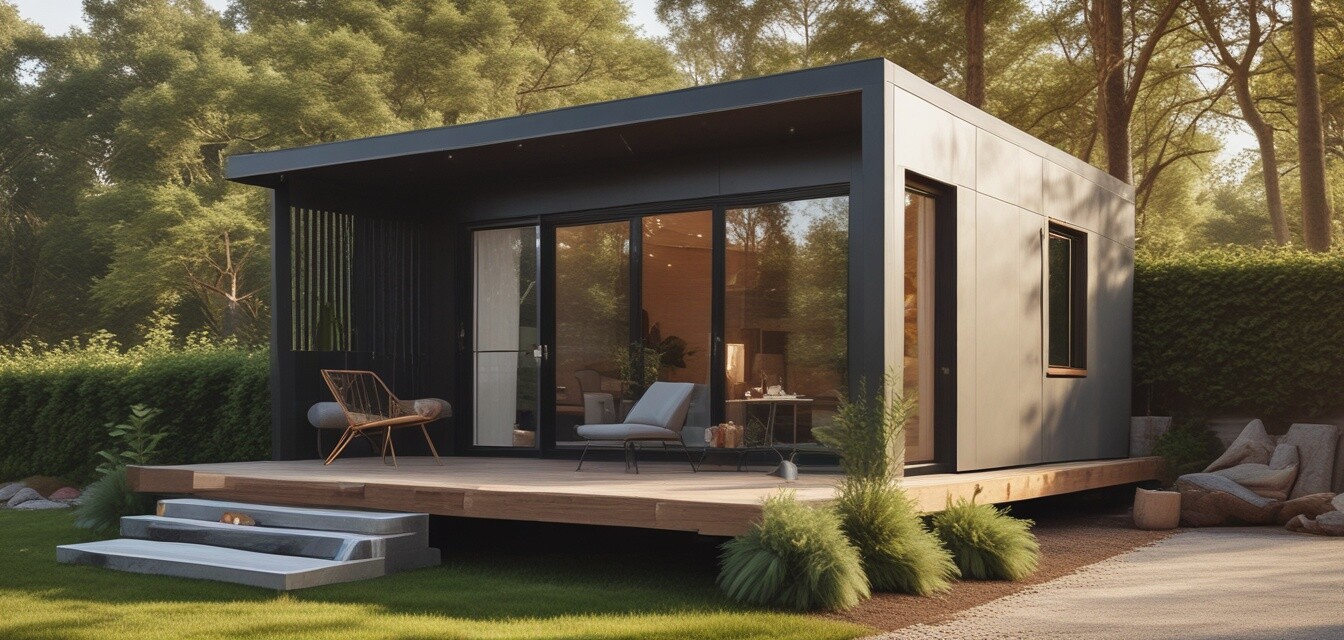
Disclosure: This content was generated with the assistance of AI and is not based on personal experience. It includes affiliate links, which means we may earn a commission if you make a purchase through them—at no additional cost to you. As an Amazon Associate, we earn from qualifying purchases. All product recommendations and endorsements are AI-generated and do not reflect personal opinions or hands-on evaluations.
Essential features to look for in tiny prefab homes
Key Takeaways
- Prioritize sustainability and energy-efficient solutions.
- Consider multifunctional furniture and space-saving designs.
- Assess the layout and floor plan for optimal use of space.
- Look for durable materials that withstand varying climates.
- Include smart home devices for enhanced convenience.
Choosing a tiny prefab home can be an exciting yet overwhelming experience. With the rise in popularity of tiny living, it's important to understand the essential features that make a tiny prefab home both functional and comfortable. This guide highlights vital aspects to consider, such as sustainability options, space-saving solutions, and smart technologies.
Space-saving solutions
When living in a tiny space, maximizing every square foot is crucial. Here are some features to consider for effective space utilization:
- Multifunctional furniture: Look for furniture that serves more than one purpose, like a sofa that converts into a bed or a dining table that doubles as a workspace.
- Built-in storage: Shelving units and cabinets that fit seamlessly into wall spaces can greatly enhance storage options without taking up extra room.
- Loft areas: Consider homes with loft spaces that can be used for sleeping, storage, or even as a reading nook.
Sustainability options
Many buyers are increasingly concerned about the environmental impact of their homes. Here are some sustainable features to look for in tiny prefab homes:
- Energy-efficient appliances: Look for homes that come equipped with appliances that conserve energy, reducing your carbon footprint.
- Renewable materials: Consider homes built with sustainable materials, such as reclaimed wood, bamboo, and recycled steel.
- Solar panel options: Houses that are designed to accommodate solar panels can help you harness renewable energy for everyday use.
Layouts and floor plans
The layout of your tiny prefab home can make a huge difference in livability. Here's what to keep in mind:
- Open-concept designs: Look for layouts that promote a sense of openness, making the space feel larger.
- Efficient use of corridors: Minimize wasted space with well-planned hallways and transitions.
- Natural light: Ensure windows and skylights are strategically placed to allow ample natural light inside, making the space feel airy.
Durability and resilience
Choosing materials that can withstand various weather conditions is crucial. Consider the following:
- Weather-resistant materials: Look for prefab homes made with materials that are durable against water, humidity, and extreme temperatures.
- Quality construction: Ensure the manufacturer has a good reputation for building strong, long-lasting homes.
Smart home devices
Integrating smart technology into your tiny prefab home can enhance convenience and efficiency. Helpful features include:
- Smart thermostat: Controls heating and cooling effectively, optimizing your energy usage.
- Smart lighting: Automated lighting systems can enhance atmospherics and save energy.
- Security systems: Look for homes equipped with smart locks and surveillance cameras for added safety.
Pros
- Energy-efficient options available
- Flexible layouts for varying needs
- Sustainably built with eco-friendly materials
Cons
- Limited space can feel cramped for some
- Initial costs can vary significantly
Conclusion
Selecting a tiny prefab home should be a thoughtful process, considering various essential features that enhance your lifestyle. By focusing on sustainability, space-saving solutions, and smart home technologies, you can find a tiny home that caters not just to your needs but also to your values. For more insights on choosing the right prefab home, be sure to check out our Buying Guides section.
For additional resources on maximizing small spaces, explore our categories on Compact Furniture, Sustainable Materials, and Smart Home Devices.

